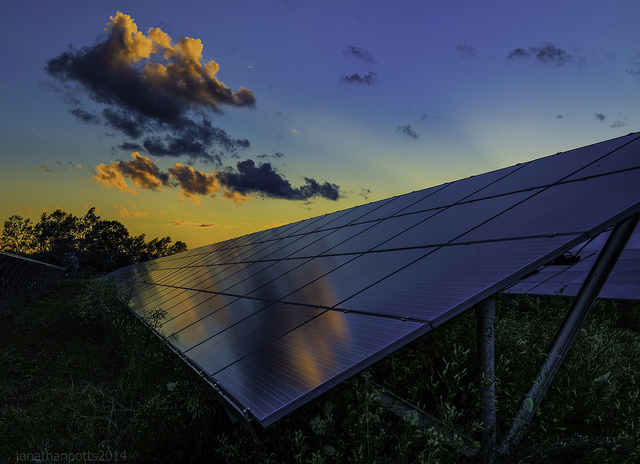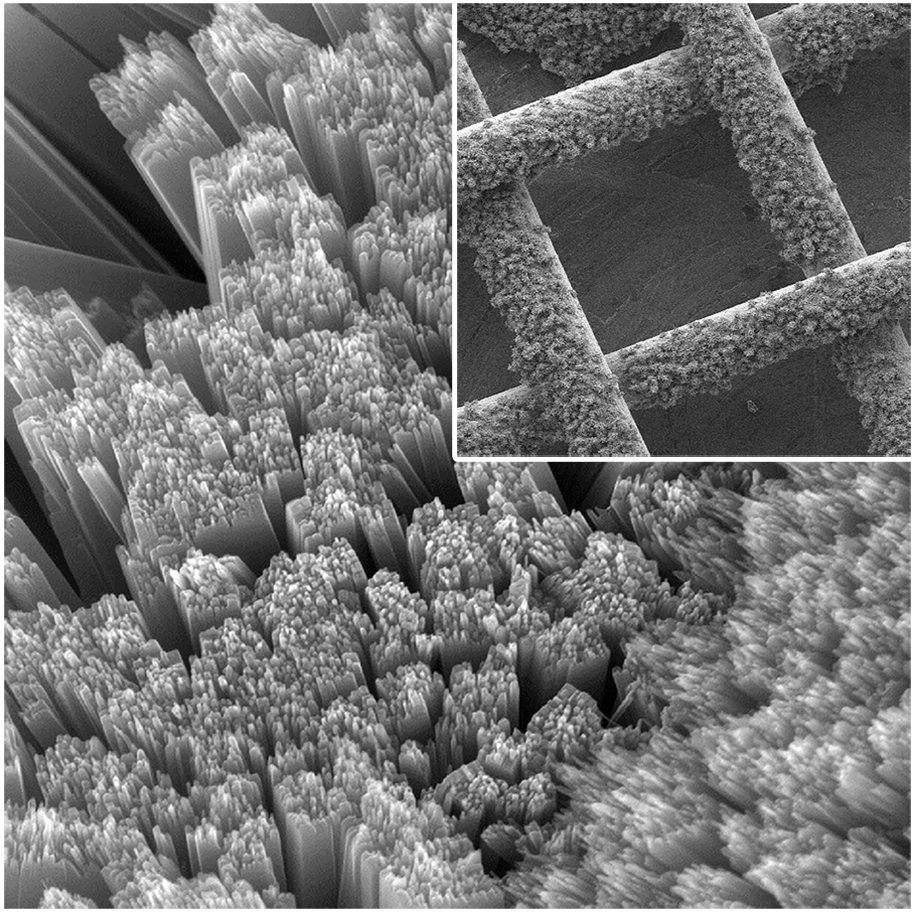World’s First Solar Cell Invented that Can Store its Own Energy

Professor Yiying Wu of Ohio State University has invented the world’s first solar battery, a device that can both generate and store electricity at the same time.
In short, the battery can be thought of as a hybrid between a solar cell and a battery that is rechargeable with air and light.
The chemistry and biochemistry professor and his students announced in the October 3 2014 issue of Nature Communications that their patent-pending device could decrease costs of renewable energy by 25%.
One of the obvious shortfalls of solar energy is its intermittent nature. Peak solar production may happen when you aren’t at home, and the reverse happens at night: you’re home, using electricity, and the sun has gone down.
Most solar arrays are what’s called grid-tied, so homeowners switch to a local utility whenever their solar supply is cut, e.g. at night. In less-common (these days) instances, the ability to store energy on top of its production is required. But whenever a battery is used up to 20% of solar energy is lost as it travels to the site of storage.

Courtesy of Yiying Wu, Ohio State University
Dr. Wu may be leading the way to offer a compliable and efficient solution to these problems: his new research suggests a device that not only allows for energy storage, but also slices this percentage down to almost zero.
The promising invention relies on a new non-aqueous, rechargeable lithium-oxygen battery, which is charged by oxidizing lithium peroxide with illumination. This greatly reduces the overall potential of the battery, which translates as boosting the overall efficiency of the mechanism.
Using this method, researchers devised a new mesh solar panel through which air can enter the battery. Electrons are then transferred between the solar panel and the battery electrode, while necessary chemical reactions that charge the battery are triggered by light and oxygen.
In short, the battery can be thought of as a hybrid between a solar cell and a battery that is rechargeable with air and light. Like all solar energy devices, solar panels are required to capture light, but in this case, oxygen is also let into the battery to allow for energy storage. Combining the technologies of capturing light with storing energy is what makes Dr. Wu’s invention remarkable. The ability for airflow is made possible by the presence of 200-μm diameter holes in a layer of titanium gauze (see inset of above picture), which covers nanometer-sized rods of titanium dioxide.
Professor Wu describes his invention as a breathing battery that “breathes in air when it discharges, and breathes out when it charges.”
The new solar-cell battery is based on some previous work accomplished by Dr. Wu and his doctoral student Xiaodi Ren, resulting in the invention of an air-powered battery nicknamed “K-air”. The K-air battery discharges its power by a chemical reaction between potassium (K) and oxygen. The device won the $100,000 prize for clean energy from the U.S. Department of Energy in 2014.
So who knows: it may just be in a not-so-distant future that homeowners will watch the sunset from their solar-powered homes– while continuing to gain more than just the enchanting effects of a picturesque setting.
Sources:
- Integrating a redox-coupled dye-sensitized photoelectrode into a lithium–oxygen battery for photoassisted charging
- New Hybrid Solar Cell Battery Takes Aim at Solar Power’s Energy Storage Problem
- Batteries Included: A Solar Cell that Stores its Own Power
- National Clean Energy Business Plan Competition 2014
